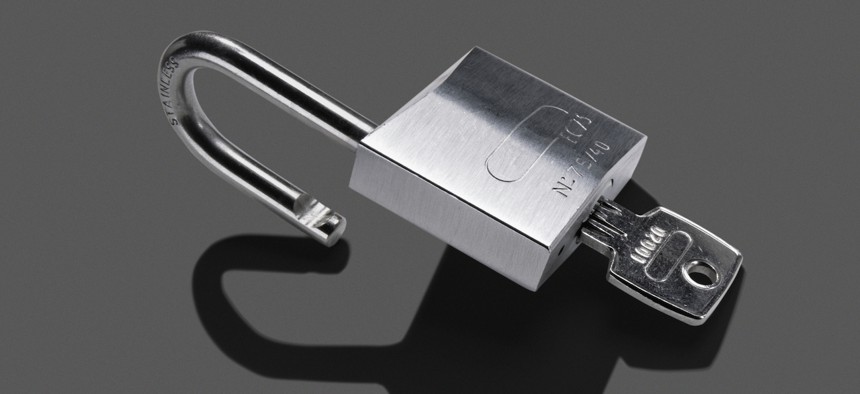
A common complaint for applicants is that their processing times don’t align with the current reported benchmarks. Paul Linse/Getty Images
Say Good-bye to the Security Clearance Status Quo
New reporting benchmarks and aggressive clearance processing timelines are some of the reforms underway.
Security clearance reform efforts made another step toward transparency and clarity with an announcement last week that reporting figures from the Office of Management and Budget will now include figures for all security clearance investigations.
“The current system only measures the 90% fastest,” Jason Miller, OMB’s deputy director for management said in testimony during a Senate Select Committee on Intelligence hearing on personnel vetting modernization on March 29. “So, we have a huge tail that we’re not measuring. We’re trying to measure everything so we can manage it and make sure that we’re really driving transformative impact.”
To date, reported security clearance figures by the intelligence community and government agencies were for only the fastest 90% of applicants. That meant as averages improved, it was still impossible to tell the overall success of the program, as some security clearance applicants languished for months or even years awaiting a final determination. Without those figures contributing to the average, it’s possible for the government to create a false picture of its personnel security program and how quickly it is onboarding personnel.
Allowing the government to only report on the fastest 90% of applicants over the past 20 years has also contributed to a system that caters to the fastest 90% of applicants. The current system too often fails to consider the unique security clearance concerns of those whose processing times fall over that threshold, including those with foreign ties, complex backgrounds – and perhaps also coveted and needed experience.
A common complaint for applicants is also that their processing times don’t align with the current reported benchmarks – with many applicants noting their processing times are obviously in the slowest 10%. With new reporting benchmarks taking all applicants into consideration, and also starting the clock at the point of application, the process is both more transparent, and universal.
In addition to the new, comprehensive benchmarks, OMB also rolled out new, aggressive clearance processing timelines. In contrast to just two years ago when security clearance processing times were over 500 days – for only the fastest 90% of applicants, today OMB is promoting benchmarks of 25 days for a low-tier position (HSPD-12 and PIV card holders), 40 days for moderate tier (Secret and non-sensitive moderate risk public trust eligibility), and 75 days for a Tier 3 investigation (Top Secret and nonsensitive high risk public clearance eligibility). The new goals shave prior benchmarks nearly in half.
It's a significant step toward greater accountability in timelines, and one largely made possible through the government’s Continuous Vetting program and the establishment of the National Background Investigation Services.
NBIS has been a four-letter word and a key elephant in the room throughout security clearance reform conversations. Throughout its implementation, the government has faced the challenge of updating a technological framework that was born before DISCO (either the music or the Defense Industrial Security Clearance Office – both work). But with eApp finally becoming a reality and new aggressive benchmarks in the works, it’s clear the government has confidence in its processes and its technology.
In 2023, eApp is set to fully replace eQIP, the government’s previous security clearance application system. Under the new reporting metrics, the government will also begin tracking its process from the point of application, not just when the investigation starts. That means it's also a way for the government to highlight the improvements brought about through eApp and the NBIS, which hope to offer a more streamlined and less error-prone candidate onboarding and security clearance initiation.
The shift in reporting from the moment an application is initiated may seem subtle, but it’s another significant move to better transparency and accountability for eApp. If the new application truly is better than eQIP, there should be fewer mistakes and fewer delays in the initiation process – improving overall clearance processing times for all applicants. And now that reporting benchmarks from OMB plan to include those initiation figures, it’s eliminating yet another area in the process previously shrouded in secrets – and not the kind that didn’t need to be protected - but that it was hiding from its own stakeholders.
Updated security clearance benchmarks are important because they signal the government’s commitment to a better candidate onboarding experience – and announcing them publicly is significant because it will compel congress to hold them accountable. And none of those benchmarks will be possible if NBIS isn’t up and running, and creating the risk-mitigation and active issue management enabled through continuous vetting.






